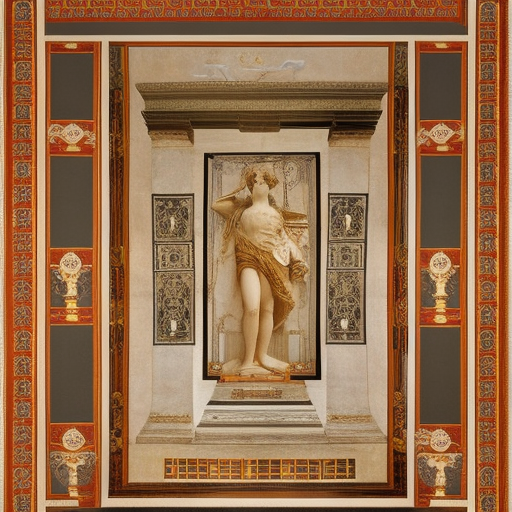Summary: Neo-Classicism was an influential art movement that emerged in the late 18th century as a reaction against the excesses of the Rococo style. It sought to revive the principles of classical Greek and Roman art, emphasizing order, clarity, and rationality. Neo-Classical artists drew inspiration from ancient mythology, history, and literature, and their works often portrayed heroic figures and moral themes. The movement had a significant impact on various art forms, including painting, sculpture, architecture, and literature.
Origins and Characteristics
Neo-Classicism emerged as a response to the frivolity and extravagance of the Rococo style that dominated the 18th century. Artists and intellectuals sought to return to the principles of classical art, which they believed represented a higher form of aesthetic and moral values. The movement was influenced by the archaeological discoveries of ancient Greek and Roman ruins, as well as the writings of philosophers such as Johann Joachim Winckelmann, who championed the virtues of classical art.
Neo-Classical artists aimed to create works that were rational, balanced, and harmonious. They emphasized simplicity, clarity, and order, rejecting the ornate and decorative elements of the Rococo. The use of straight lines, geometric shapes, and symmetry became prevalent in Neo-Classical art. Artists also focused on depicting idealized human figures, often drawing inspiration from ancient Greek and Roman mythology and history.
Neo-Classical Painting
In painting, Neo-Classicism was characterized by its emphasis on historical and mythological subjects. Artists sought to convey moral and intellectual messages through their works. Jacques-Louis David, one of the most prominent Neo-Classical painters, depicted scenes from ancient history and mythology with a sense of grandeur and heroism. His painting “The Oath of the Horatii” exemplifies the movement’s ideals of patriotism, sacrifice, and duty.
Neo-Classical painters also paid great attention to detail and accuracy in their compositions. They used strong chiaroscuro (contrasts between light and dark) to create a sense of drama and depth. The use of muted colors and a restrained palette further emphasized the seriousness and austerity of the subjects.
Neo-Classical Sculpture
In sculpture, Neo-Classicism revived the tradition of creating monumental and idealized figures. Sculptors aimed to capture the beauty and grace of the human form, often drawing inspiration from ancient Greek and Roman sculptures. The works of Antonio Canova, a leading Neo-Classical sculptor, exemplify the movement’s ideals of idealized beauty and emotional restraint. His sculpture “Psyche Revived by Cupid’s Kiss” portrays a moment of tenderness and sensuality, while maintaining a sense of classical elegance.
Neo-Classical Architecture
Neo-Classical architecture sought to revive the classical architectural styles of ancient Greece and Rome. Buildings were characterized by their symmetrical designs, grand proportions, and use of classical elements such as columns, pediments, and domes. The works of architects such as Andrea Palladio and Étienne-Louis Boullée exemplify the Neo-Classical style. The United States Capitol in Washington, D.C., and the British Museum in London are notable examples of Neo-Classical architecture.
Legacy and Influence
Neo-Classicism had a profound influence on art and culture throughout the 18th and 19th centuries. Its emphasis on order, rationality, and moral themes resonated with the Enlightenment ideals of the time. The movement’s principles also influenced later art movements, such as Romanticism and Neoclassical Revival. The legacy of Neo-Classicism can be seen in the works of artists such as Jean-Auguste-Dominique Ingres, who combined classical elements with a more sensual and romantic style.
In conclusion, Neo-Classicism was a significant art movement that emerged in the late 18th century as a reaction against the Rococo style. It sought to revive the principles of classical Greek and Roman art, emphasizing order, clarity, and rationality. Neo-Classical artists drew inspiration from ancient mythology, history, and literature, and their works often portrayed heroic figures and moral themes. The movement had a lasting impact on various art forms, including painting, sculpture, architecture, and literature, and its influence can still be seen in art today.












